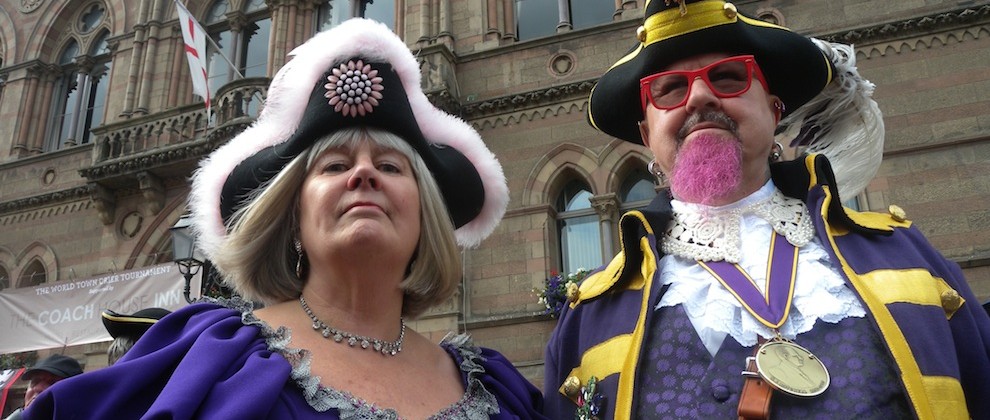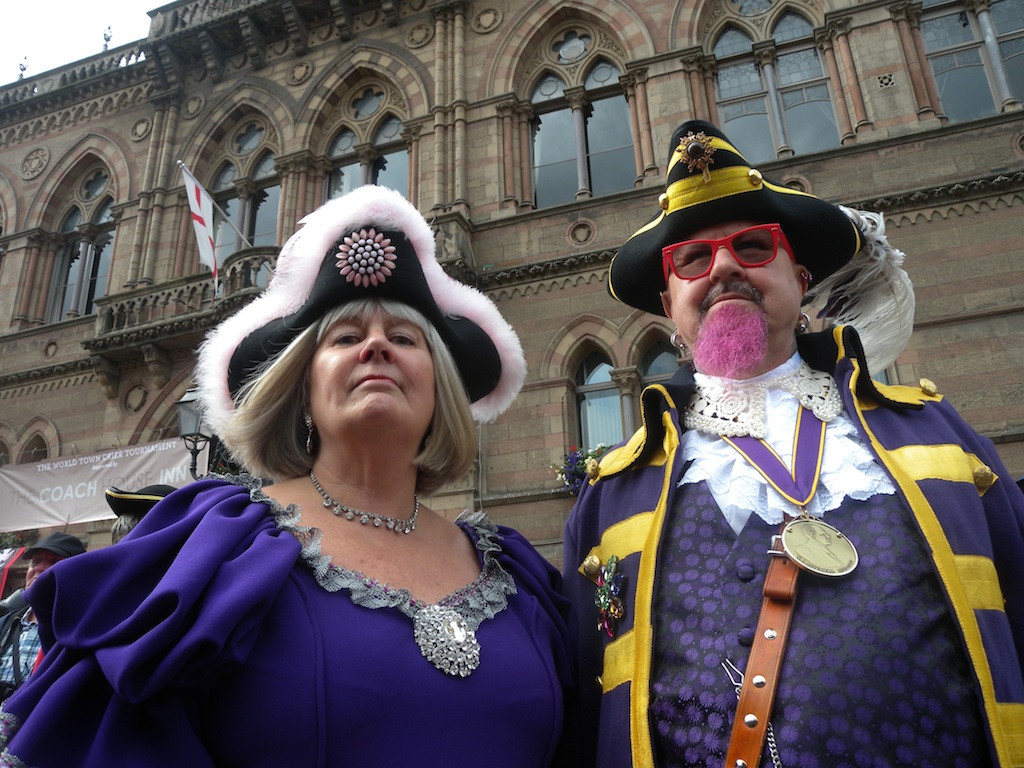There’s a man who stands in the middle of Chester each day in tights and shouts at people.
But don’t worry. For David Mitchell, the Town Crier of Chester, it’s just a job.
“I booked a town crier to wake my bride to be on our wedding day. He had to cancel, so I hired the outfit and did it myself. When his job subsequently came up, I applied,” explains ex-teacher David, whose book For Crying Out Loud! will be published by Avenue Books in September.
“It’s an unusual job interview, whereby candidate and panel stand on either sides of the River Dee.”
This year David is inviting 40 more town criers from places as diverse as Bromsgrove and Baltimore to the historic Roman city of Chester.
He will be hosting the 2010 Chester World Town Crier Tournament [pictured above], the event reaching a rallying-call crescendo after three rounds with the final on June 19 in the Town Hall Square.
Festival season
The event also kicks off Chestival, a month-long arts festival running until July 14.
Amongst the Regency frilly-frocked competitors, look out for Martin Wood, the town crier of Shrewsbury, who at 7ft 2in is the world’s tallest crier.
Check out, too, the vocal delivery of the in-form favourite for the title, Judy Campbell from Australia.
Judy is the first woman to win the Australian National Championship and the only woman to be placed in the top three at the 1997 World Championships.
For David, bringing the tournament to Chester reflects the close historical links between the city and the art of crying.
“Chester is the only place in the world to retain a regular proclamation at a fixed point at a fixed time (the Cross, at noon, Tuesday to Saturday, May-August) and has done so since 1553.”
Historically town criers have provided a cornerstone of community life.
William the Conqueror is credited with importing their trademark call of ‘Oyez’ (it means ‘listen up’ in French) but bell-totting criers also appeared in the Bayeux Tapestry and there are references in The Old Testament in (Book of Proverbs, Chapter 8, verses 1-3).
New shoots
Far from a dying art, town crying is today enjoying something of a renaissance thanks to its tourist appeal.
There are currently around 200 town criers across the UK alone.
The Chestival programme also brings the Chester Mystery Plays (June 17-20), a Midsummer Watch Parade (June 18-20) and Fireworks concerts (June 25-26) to the city.
You can’t miss the events. Chester’s very own town crier will be shouting about them from the rooftops.
“Town crying is a historic form of communication,” says David.
“Chester lends the perfect historic setting to a world-class event.”
Oyez to that.
What did you think of this story? Post your comments below.
This story was first published in Hotline magazine in 2010.
Liked this? Try also Home from home in Chester.


